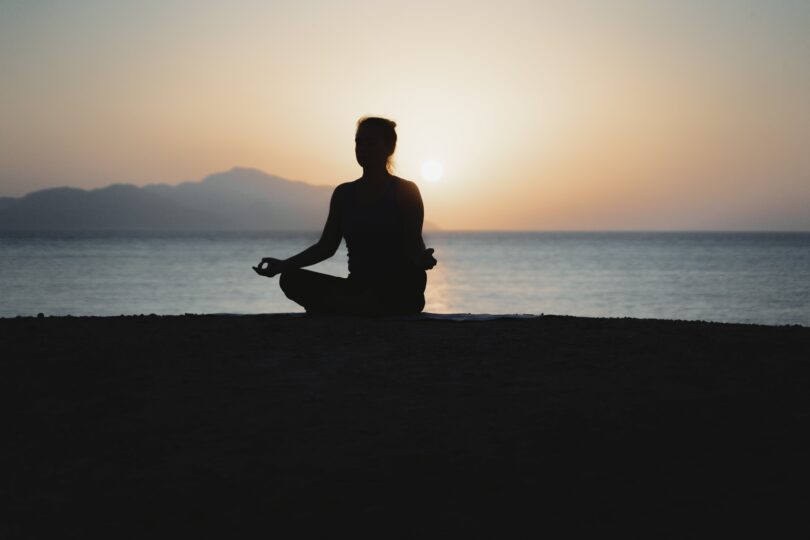Table of Contents
Yoga is often hailed for its holistic benefits, promoting physical fitness, mental well-being, and spiritual awareness. When it comes to seniors, especially those facing mobility challenges, the practice takes on a new level of significance. In this article, we delve into the world of yoga tailored for disabled seniors, exploring how this ancient practice can empower lives and enhance overall health.
Introduction Yoga for Disabled Seniors
As we age, staying active becomes crucial for maintaining a healthy lifestyle. For disabled seniors, traditional forms of exercise may pose challenges. Enter yoga – a versatile practice that can be adapted to suit various needs and abilities. In this article, we’ll explore how yoga, when modified and personalized, can be a transformative tool for disabled seniors.
Understanding the Needs of Disabled Seniors
Before delving into specific yoga poses and techniques, it’s essential to understand the unique needs of disabled seniors. Mobility challenges, chronic health conditions, and individual limitations require a thoughtful and personalized approach. One size does not fit all, and acknowledging this is the first step towards creating an inclusive yoga experience.
Adapting Traditional Yoga Poses
Yoga poses, while often seen as intricate and challenging, can be adapted to accommodate different abilities. For seniors with limited mobility, modifications and the use of props such as blocks and straps can make poses accessible. The focus here is not on perfection but on encouraging flexibility, strength, and mindful movement.
Breathing Techniques for Relaxation
Controlled breathing is a cornerstone of yoga, offering not just physical but also mental benefits. For disabled seniors, incorporating breathwork can be a powerful stress-relief tool. The connection between breath and movement is emphasized, fostering a sense of calm and relaxation during yoga practice.
Choosing the Right Yoga Style
The world of yoga is diverse, with various styles catering to different needs. Gentle yoga is an excellent starting point for beginners, offering a slow and mindful approach. Chair yoga, designed for those with limited mobility, allows individuals to experience the benefits of yoga while seated. Water yoga, conducted in a pool, provides joint support and eases pressure on muscles.
Building a Safe and Supportive Environment
Creating a safe and supportive environment is crucial for the success of yoga sessions for disabled seniors. This involves ensuring proper flooring, using supportive props, and making the yoga space accessible. The goal is to foster an atmosphere where individuals feel comfortable exploring their abilities without judgment.
Incorporating Meditation for Mental Wellness
While physical benefits are evident, the mental wellness aspect of yoga is equally significant. Meditation and mindfulness practices can help reduce stress, improve focus, and enhance emotional well-being. Guided meditation sessions tailored for disabled seniors can be particularly effective in promoting a sense of calm and mental clarity.
Related Article: Yoga for Overweight Seniors
Case Studies and Success Stories
Real-life examples can inspire and motivate. Sharing case studies and success stories of disabled seniors who have embraced yoga showcases the tangible benefits. From improved mobility to enhanced mood, these stories highlight the positive impact that yoga can have on the lives of individuals facing physical challenges.
Creating a Personalized Routine
One size does not fit all in yoga. It’s essential for disabled seniors to work with healthcare professionals and experienced yoga instructors to create a personalized routine. Tailoring practices to individual needs and establishing realistic goals ensures that the benefits of yoga are maximized while minimizing the risk of injury.
Community Engagement and Support
The sense of community plays a vital role in the success of any wellness program. For disabled seniors, participating in group yoga sessions fosters socialization and a shared sense of purpose. Online resources also provide accessibility, allowing individuals to connect and support each other, regardless of physical location.
Overcoming Common Challenges
Embarking on a yoga journey can be met with skepticism and concerns about safety. Addressing these concerns openly and providing reassurance is crucial. Celebrating small victories and milestones along the way helps build confidence and encourages ongoing participation.
Empowering Disabled Seniors Through Yoga
Yoga is more than just a physical practice; it’s about empowerment. For disabled seniors, yoga can foster independence, boost self-confidence, and instill a positive mindset. By embracing the philosophy of yoga, individuals discover their strength and resilience, transcending physical limitations.
Yoga Instructors Specializing in Senior and Disabled Communities
The expertise of yoga instructors is pivotal in ensuring a positive and beneficial experience. Instructors specializing in senior and disabled communities possess the knowledge and skills necessary to adapt yoga practices accordingly. Testimonials from participants further emphasize the positive impact of expert guidance.
Maintaining Consistency and Progress
Like any wellness journey, consistency is key in reaping the full benefits of yoga. Setting achievable goals, tracking progress over time, and celebrating even the smallest advancements contribute to a sense of accomplishment. This approach encourages disabled seniors to stay committed to their yoga practice.
FAQs
Is yoga suitable for all disabled seniors?
Yoga can be adapted for various abilities, but it’s essential to consult with healthcare professionals before starting.
How often should disabled seniors practice yoga?
The frequency depends on individual circumstances, but starting with a few sessions per week is recommended.
Can chair yoga provide the same benefits as traditional yoga?
Yes, chair yoga offers similar benefits and is designed to accommodate those with limited mobility.
What if a disabled senior is new to yoga?
Beginners are encouraged to start with gentle yoga and gradually progress based on their comfort level.
Conclusion
In conclusion, yoga for disabled seniors is not just about physical exercise; it’s a pathway to empowerment and improved well-being. By understanding individual needs, adapting traditional poses, and incorporating mindful practices, yoga becomes a tool for transformation. As we encourage disabled seniors to explore the world of yoga, we invite them to embark on a journey of self-discovery, resilience, and holistic health.
Related Article: Easy Yoga for Elderly Senior Citizens







